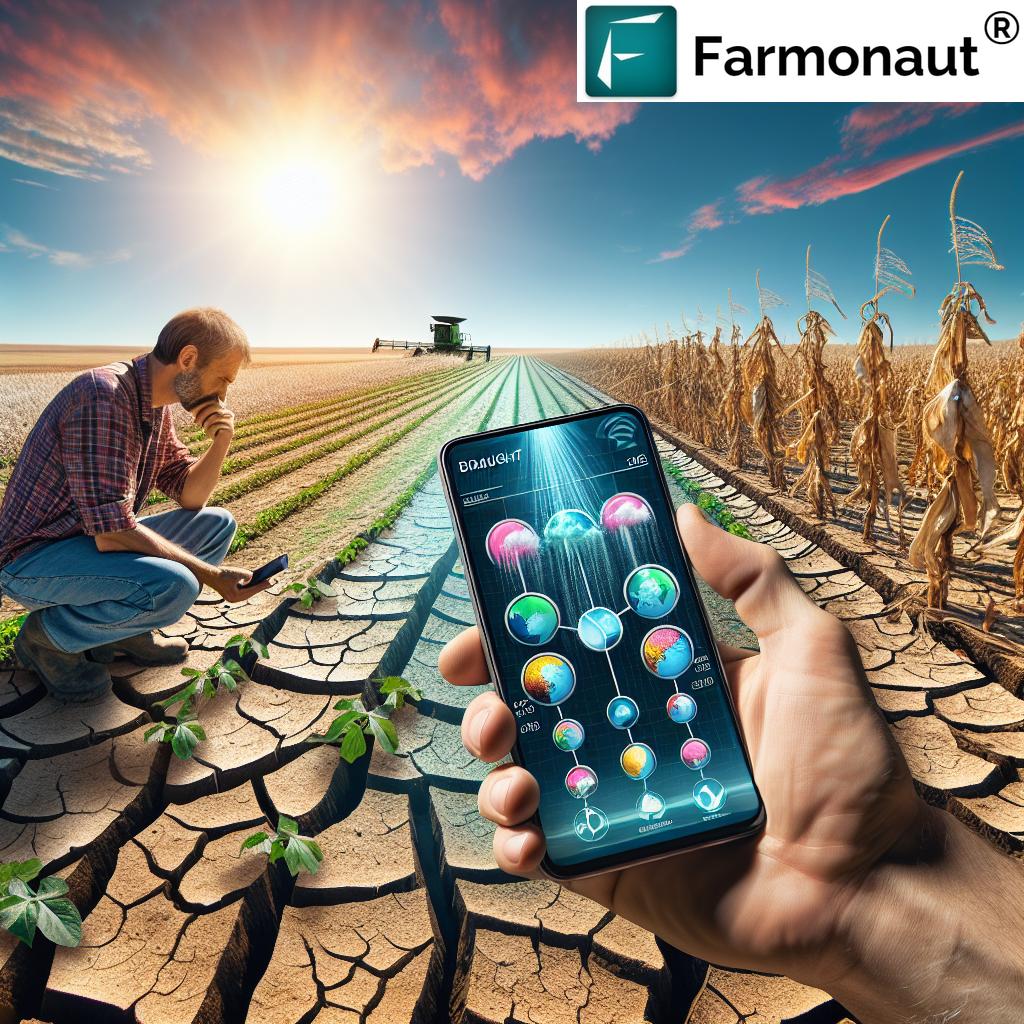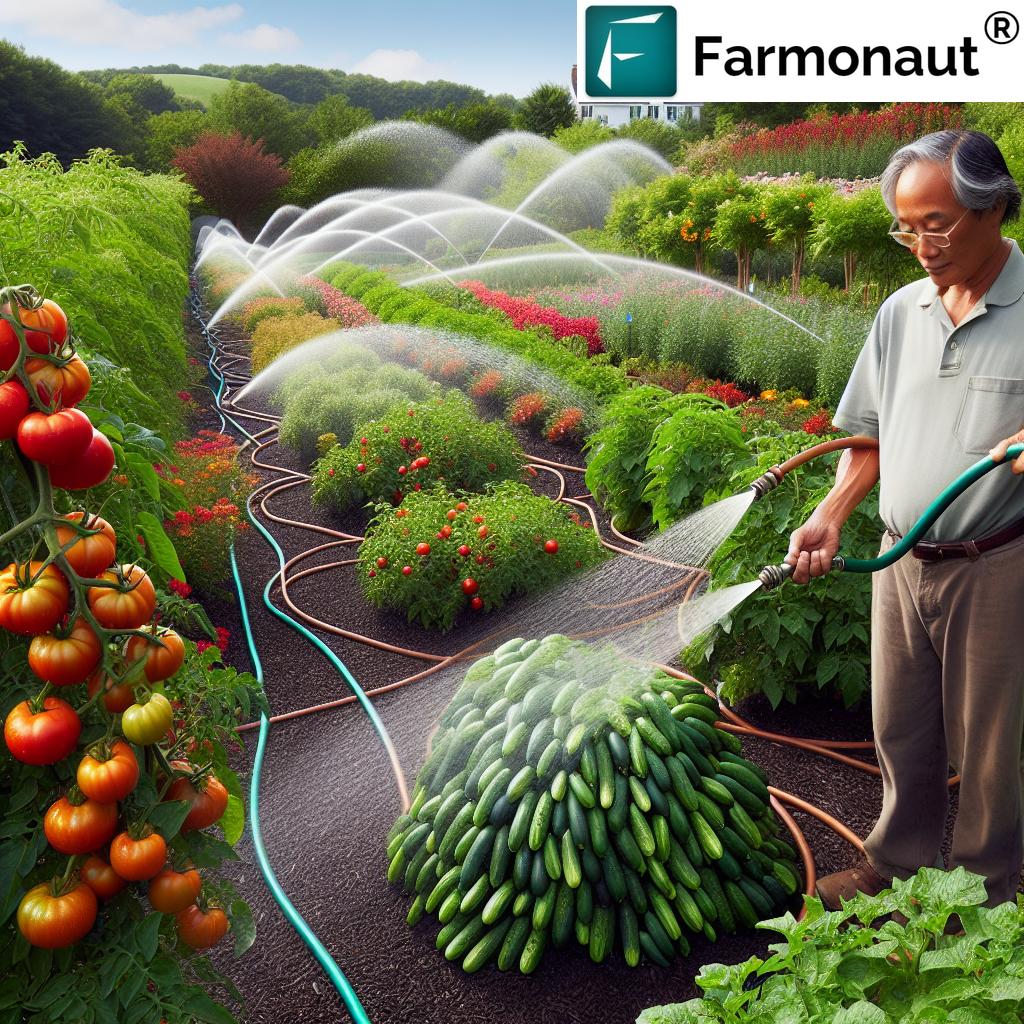Aerial Crop Duster Insurance: Top Benefits & Advantages
“Over 70% of aerial crop dusters in 2025 will require specialized insurance due to advanced technology integration.”
In the rapidly evolving landscape of agriculture, risk management has become indispensable. As farmers continuously face unpredictable weather, pest infestations, climate change, and fluctuating market conditions, the need for robust protection against uncertainties that threaten their livelihoods becomes even more crucial. Among the many advancements aiding modern farming, aerial crop dusting stands out—revolutionizing the management of crops, enhancing productivity, and maximizing efficiency for agricultural operations in 2025.
However, with the increasing use of aerial dusters, understanding and embracing aerial crop duster insurance—alongside comprehensive crop insurance—is more important than ever. This blog offers a detailed exploration into these essential insurance models, with a focus on the benefits, advantages, and emerging trends in modern agriculture for the years ahead.
Table of Contents
- 1. The Growing Importance of Aerial Crop Duster Insurance
- 2. Understanding Aerial Crop Duster Insurance
- 3. Basics of Crop Insurance in Modern Farming
- 4. Advantages & Benefits of Crop Insurance
- 5. Arecanut Crop Insurance: Special Coverage Explained
- 6. Comparison Table: Traditional Crop Insurance vs. Aerial Crop Duster Insurance in 2025
- 7. Technology & Innovations in Risk Management for 2025
- 8. Farmonaut: Satellite-Driven Solutions Empowering Insurance
- 9. Conclusion
- 10. Frequently Asked Questions
The Growing Importance of Aerial Crop Duster Insurance
Over the last decade, aerial crop duster insurance has rapidly become indispensable for farmers investing in modern crop technologies. As aerial dusters—including both manned aircraft and sophisticated drones—apply fertilizers, pesticides, and herbicides across vast or inaccessible fields, they enhance productivity and reduce labor costs. Yet, these benefits come with new risks. From equipment malfunctions and chemical spillage to unintentional crop damage and environmental liabilities, the stakes are high.
- Climate change increases weather unpredictability.
- Pest and disease infestations threaten livelihoods.
- Technologies enable new efficiencies—but bring potential liabilities and insurance needs.
In 2025, specialized aerial crop duster insurance and robust crop insurance schemes are essential to protect investments, operator safety, communities, and the broader agricultural market.
Understanding Aerial Crop Duster Insurance in 2025
What is Aerial Crop Dusting?
Aerial crop dusting involves the application of fertilizers, pesticides, and herbicides by aircraft or drones that fly over large, sometimes inaccessible agricultural fields. This method ensures rapid, uniform coverage—maximizing efficiency, reaching extensive areas, and reducing labor costs and time for farmers.
- Ideal for inaccessible fields, steep terrains, or wide acreages
- Addresses labor shortages
- Leverages increasing precision and AI-driven systems
However, the use of aerial dusters carries inherent risks:
- Aircraft accidents or drone crashes
- Equipment malfunctions disrupting operations
- Unexpected chemical spillage impacting crops and neighboring properties
- Unintentional crop damage, environmental hazards, or liabilities due to application errors
- Emerging risks such as system hacking (cyber risks) in autonomous dusters
Given these factors, specialized insurance policies are essential to mitigate the risks and provide financial security.
What Does Aerial Crop Duster Insurance Typically Cover?
- Damage to the Aircraft/Duster: Repairs or replacement due to accidents, malfunctions, or disasters.
- Third-Party Liabilities: Coverage for damage caused accidentally by dusting operations to crops or neighboring properties.
- Crop Damage: Protection if the duster inadvertently harms the crops during operations.
- Environmental Liabilities: Includes chemical spills, regulatory fines, and cleanup costs.
- Cyber & Data Risks (Modern Policies): Protection for digital systems, especially for AI-equipped and drone-based dusters.
Some plans even provide replacement equipment during repair downtime, income protection if services are interrupted, and specialized packages for high-value crops like arecanut.
Why Is Aerial Crop Duster Insurance So Important Now?
With the spread of modern farming technologies and the shift toward data-driven agriculture in 2025, the potential liabilities associated with aerial dusting have multiplied. Farmers and dusting operators are investing more capital into their equipment, meaning any loss—be it from equipment breakdown or legal fines—poses a substantial financial risk.
Insurance supports operators in:
- Protecting Their Investments: Equipment and aircraft are expensive, and repairs can cost thousands.
- Complying with Regulations: Many jurisdictions (including Karnataka, India) now mandate aerial crop dusting insurance for operations with advanced drones or aircraft.
- Maintaining Market Access: As food traceability and quality controls tighten, insured operations are viewed as more reliable partners within the food supply chain.
The Basics of Crop Insurance in Modern Agriculture
Crop insurance is a critical risk management strategy for farmers and agricultural stakeholders. Crop insurance plans protect farmers from losses caused by natural disasters (droughts, floods, hail, storms), pest attacks, diseases, and, increasingly, market fluctuations in price.
- Comprehensive crop insurance schemes often cover a range of crops (including specialty, high-value, and vulnerable varieties such as arecanut).
- The basics involve a straightforward process: enrollment, risk assessment, premium calculation, and claims verification when losses occur.
- In regions like Karnataka and Kerala in India, state-backed schemes further increase accessibility and affordability for smallholders.
As we enter 2025, crop insurance plans are evolving to address new risks—from climate change impacts on weather patterns to cyber risks threatening smart agricultural equipment.
Some of the specialty models now integrate cutting-edge technologies like remote sensing, AI-driven risk analytics, and satellite monitoring to boost accuracy, cut claims processing times, and support modern farming practices.
For those seeking advanced solutions supporting crop insurance schemes, tools like Farmonaut’s Crop Loan & Insurance Verification offer satellite-based insights that help lenders and insurers to rapidly, objectively confirm crop health and losses—reducing fraud while making credit and insurance more accessible.
Advantages of Crop Insurance: Modern Benefits for 2025
“Modern crop insurance models in 2025 can reduce farmers’ financial risk by up to 40% compared to traditional policies.”
Financial Security and Stability
- Cushions catastrophic losses: When unpredictable conditions (drought, pests, weather disasters) strike, farmers receive payouts that offset income loss and protect their livelihoods.
- Reduces dependence on expensive credit: Insured farmers access favorable loan terms, minimizing financial stress and borrowing cycles.
Encourages Innovation and Investment
- A safety net boosts confidence: With crop insurance in place, farmers are bolder in adopting new technologies (like aerial dusters, AI equipment) and planting specialty crops like arecanut.
Supports Risk Management and Sustainability
- Complements risk mitigation strategies: Combined with precision farming, diversification, and improved farming practices, insurance significantly cuts overall risk.
- Stabilizes markets and food supply: Consistent production enables a more stable food supply chain and less volatility for both farmers and consumers.
Increases Access to Credit
- Enhanced creditworthiness: With insured crops, banks and cooperatives are more willing to provide loans, expanding growth opportunities.
Efficient and Transparent Claims
- Multi-tech integration: New claim models use remote sensing, blockchain (see Farmonaut Product Traceability), and AI to ensure claims are processed quickly, transparently, and with fewer disputes.
Arecanut Crop Insurance: Special Coverage for High-Value Crops
Arecanut crop insurance presents a prime example of how insurance adapts to the unique needs of high-value and specialty crops. In southern Indian states like Karnataka and Kerala, arecanut is a cornerstone of regional agriculture—but is highly vulnerable to climate fluctuations, monsoon variability, pest infestations, and diseases.
- Long maturity cycle: Arecanut palms often need 5-8 years to mature, requiring high investment.
- Losses are catastrophic: Due to the time and capital involved, a single disaster can set producers back for years.
Arecanut crop insurance models (often weather-indexed) thus:
- Pay out when adverse weather (e.g., excess rainfall, drought, storms) exceeds predefined thresholds—simplifying claims and ensuring rapid disbursals.
- Sometimes include price fluctuation coverage, protecting income from market swings.
- Empower farmers to manage risk, confidently apply modern crop management practices (including aerial dusting), and maintain stable production.
Advanced monitoring solutions, such as Farmonaut Large Scale Farm Management, provide real-time health assessments and resource tracking for arecanut plantations, decreasing the possibility and scale of uncontrolled losses.
Comparison Table: Traditional Crop Insurance vs. Aerial Crop Duster Insurance in 2025
| Insurance Type | Coverage Features | Estimated Premium (USD/year/acre) | Technology Integration | Claim Process Speed (days) | Risk Reduction Rate (estimated %) | Suitability for Modern Farming |
|---|---|---|---|---|---|---|
| Traditional Crop Insurance | Damage from listed perils (droughts, floods, storms, pests, diseases), covers field crops | $15 – $40 | Manual reporting, field inspections, limited remote sensing | 30–90 | 20–30% | Best for generic field crops, less suited to high-tech, precision farming or automation |
| Aerial Crop Duster Insurance |
All traditional coverage Plus: Aircraft/duster/equipment damage, third-party liabilities, cyber protection, rapid claims for accidental crop/equipment losses, environmental liabilities |
$35 – $80 (higher for advanced drone/A.I.) | Satellite monitoring, GPS/AI analytics, live drone telemetry, blockchain record for claims | 5–15 | 35–45% | Tailored for modern farming: high-value crops, smart equipment, risk diversification, tech adoption |
Use the above Farmonaut apps for field mapping, satellite-based crop health monitoring, and to augment your insurance claims workflow. Satellite data is transforming risk management and insurance eligibility for modern farming worldwide.
Technology & Innovation: The Future of Crop Risk Management in 2025
As agriculture continually evolves, so do risk management practices and insurance models. Entering 2025, we witness several transformative trends:
-
Satellite technology: Enables multi-spectral, real-time crop monitoring, improving claim verifications and detecting losses early.
See how carbon footprint tracking empowers sustainable insurance policies with Farmonaut. - Precision AI & Big Data: AI-driven analytics offer personalized advice, precision dosing, and targeted interventions that reduce risks for farmers and insurers.
- Blockchain-based insurance traceability: Ensures transparent handling and auditing of claims and indemnity payments, increasing trust for both farmers and insurers.
- Drone Telematics & IoT: With smart aerial dusters, insurers receive real-time operational data, reducing fraudulent claims and enabling dynamic risk assessment.
- Eco-friendly Insurance Models: Policies encouraging sustainable practices, reduced chemical dependency, and carbon sequestration gain traction.
-
API-driven integrations: Platforms like Farmonaut API and Farmonaut Fleet Management enable insurers and farm tech providers to build custom claims, resource tracking, and verification workflows directly into their products.
Developer Docs here
Such innovations dramatically enhance risk management, reduce losses, and speed up claims for operators leveraging aerial dusting and modern insurance coverage.
Farmonaut: Satellite-Driven Insights Empowering Smart Crop & Duster Insurance
As the world of agriculture rapidly modernizes, we at Farmonaut play a vital role in bridging real-time satellite technology and the evolving needs of insurance—including both crop insurance and aerial crop duster insurance in 2025.
- Our satellite-based monitoring platform delivers precise field data on vegetation health, soil conditions, and operational efficiency. This empowers farmers, insurers, and other stakeholders with reliable evidence for claims processing and risk assessment.
- We integrate blockchain-based traceability to ensure transparent handling of supply chain and insurance transactions. This augments authenticity, reduces fraud, and builds trust in modern insurance models.
- Our AI advisory system analyzes satellite and field sensor data to deliver customized, crop-specific recommendations—helping optimize resource allocation and reduce the risk of crop losses or operational hazards during aerial dusting.
- APIs and mobile/web apps lower barriers for businesses and governments to access actionable insights that drive informed decisions for risk management and crop insurance.
- Our cost-effective subscription model allows anyone, from smallholders to large enterprise farm fleets, to access the benefits of advanced satellite monitoring and blockchain-based validation for smarter insurance participation.
By making these innovative technologies accessible and affordable, we help accelerate the transition towards more resilient, transparent, and sustainable risk management strategies in global agriculture.
For plantation/forest advisory integrated with insurance verification, try Farmonaut’s Crop Plantation & Forest Advisory on web and mobile.
Conclusion: Building Resilient Agriculture with Aerial Crop Duster Insurance
As we move through 2025 and beyond, the synergy between aerial crop dusting technology and robust insurance coverage will be foundational for the security, productivity, and resilience of modern agriculture.
- Aerial crop duster insurance is now essential—not optional—especially as dusters and drones become embedded into everyday farming practices worldwide.
- Comprehensive crop insurance schemes, especially those tailored for specialty crops like arecanut, protect farmers from ever-present risks that arise from a rapidly changing climate and volatile markets.
- Innovation in modeling, monitoring, and claims has made these tools accessible—promoting wider adoption of advanced technologies in agricultural operations.
-
Farmers and operators who prioritize insurance are more likely to
- Recover quickly from losses
- Attract credit and investment
- Pursue sustainable growth without fear of catastrophic setbacks
Through the adoption of innovative, integrated risk management strategies—combining insurance with leading-edge technologies and data-driven decision-making—modern farming can thrive in a world of continuous change and uncertainty.
Get started with Farmonaut’s satellite technology to monitor your crops, support insurance verification, enable blockchain-backed traceability, and drive smarter decisions—today and into the future.
Frequently Asked Questions (FAQ)
What is aerial crop duster insurance?
Aerial crop duster insurance is a specialized policy that protects farmers and operators from the unique risks associated with applying fertilizers, pesticides, and herbicides using aircraft or drones. It covers damages to equipment, third-party liabilities, environmental damage, and, in modern policies, cyber-related risks.
Why do farmers in 2025 need specialized aerial crop duster insurance?
The advanced integration of drones, AI-guided dusters, and high-cost equipment increases both the efficiency and the risk profile of crop management. Specialized insurance is essential for protecting high-value assets, meeting regulatory requirements, and ensuring rapid recovery from unexpected losses.
How do crop insurance and aerial duster insurance differ?
Crop insurance mainly covers losses due to natural disasters, pests, diseases, and market fluctuations affecting the crops themselves. Aerial crop duster insurance, on the other hand, covers risks associated with the operational delivery of agrochemicals via aircraft or drones—such as equipment damage, accidental crop loss, third-party claims, and emerging technology risks.
Will aerial crop dusting become safer and more reliable in the future?
Absolutely. With the advent of AI, real-time satellite monitoring, and stringent insurance-backed protocols, aerial dusting is becoming more precise, with lower risk and better outcomes for farmers.
What benefits does Farmonaut provide for insurance and risk management?
We at Farmonaut offer cost-effective satellite-driven crop monitoring, blockchain-based verification, fleet and resource management, and AI-powered advisories. Our platform supports faster, more transparent insurance claims, improved risk assessment, and sustainable agricultural practices.
How does arecanut crop insurance work?
Arecanut crop insurance often leverages weather-indexed models tailored to high-value, long-maturity crops like arecanut. These plans deliver indemnity payouts when pre-set weather thresholds are breached, or in the event of specific natural or market risks—offering rapid, hassle-free protection for growers.














